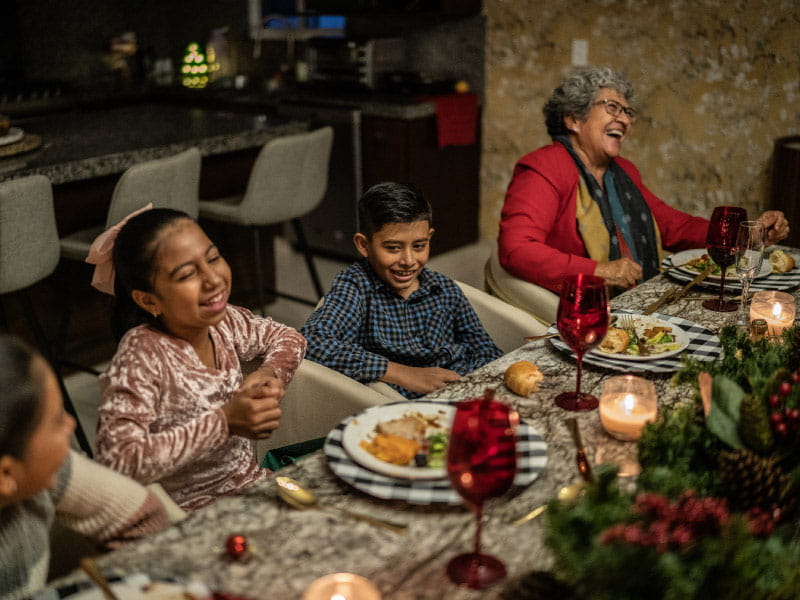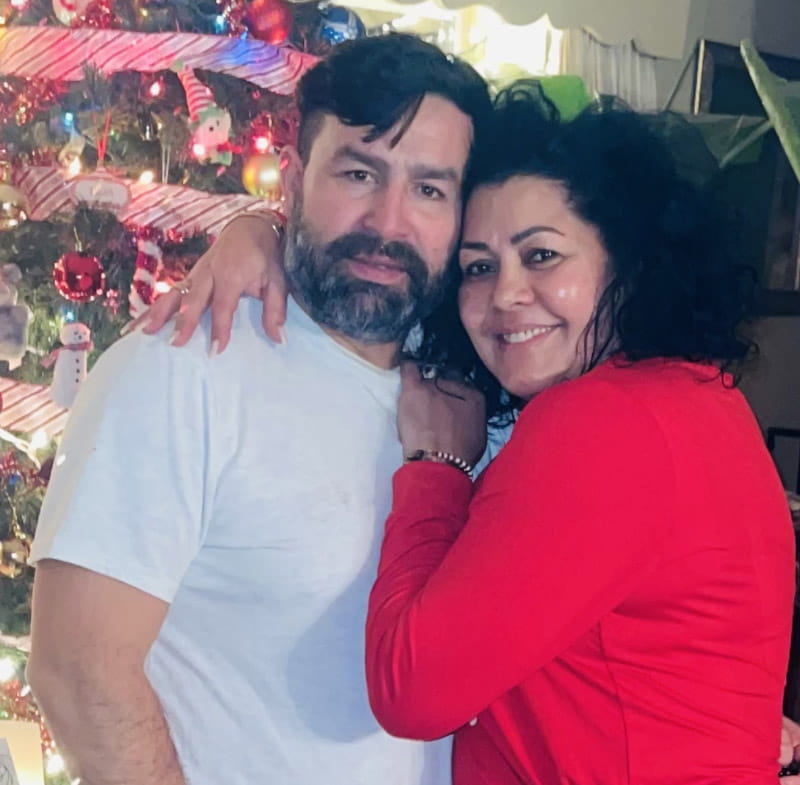Keeping cultural traditions heart-healthy can make all spirits bright this holiday season
By Lucien Chauvin, American Heart Association News

Erick Romero enjoys celebrating the winter holidays, but not in the same way he did years ago.
Romero needed open-heart surgery to repair a faulty valve a few years after emigrating from his native Venezuela to Rhode Island. He and his family have since adapted to a different lifestyle, including their holiday traditions.
Before his surgery, Romero and his family and friends would get together to "eat, drink and play soccer" during the holidays, he said. There's an abundance of food and drink, "and it is hard to say no to things."
Now 50, Romero still gathers with people close to him, but he has learned to say no. He largely stays away from alcohol, has changed what and how much he eats, and always takes his medications. He has replaced soccer and extreme sports with yoga.
"I cannot play contact sports because a blow to the chest could provoke a clot," he said.
Romero is doing what's expected of someone who experienced a life-threatening health event, but he said it's not that easy. Doctors who work with Hispanic and Latino patients agree, saying the holiday season can be challenging for families who want to go all out in celebration but have a relative with heart issues.

For Hispanic families, holiday celebrations can mean feasting on traditional foods that bring back memories of times past but also may contribute to cardiovascular disease risk factors because ingredients can be salty, fatty or high in calories.
Dr. Margarita Terán-García, assistant dean for the Integrated Health Disparities Program at the University of Illinois Extension in Champaign, said a first step is to change the idea of the holidays being centered around food.
People tend to eat more in the company of others, she said, more so around the holidays when emotional and social eating are at play.
Hispanic families are among the most likely to dine together, Census Bureau data shows. Add relatives visiting for the holidays, and those dinners are likely to get larger and unhealthier.
"There is a behavioral element of eating in the absence of hunger because we are socializing," Terán-García said. "We are talking, we are having fun, and we forget that we are drinking, eating and we do not measure ourselves."
She said the holidays shine a particularly bright light on nutritional issues faced by many Hispanic people in the United States, where adapting to a new diet can depend on their home countries, socioeconomic background and education.
There is a high volume of cheaper food but with few nutrients, Terán-García said. "People receive a lot of misinformation, which makes it hard to make the right choices, the healthy choices."
High-calorie, low-nutritious food is a major reason behind disproportionately high rates of obesity and related health issues among Hispanic people in the U.S., research shows. Obesity is known to contribute to other health conditions, including high blood pressure, diabetes and cancer.
Families dining together is crucial and a tradition that can contribute to better diets and healthier lives, Terán-García said. But during the holidays, people tend to pile food on their plates and, worse still, feed children the same amount as adults. "We are teaching children that it is fine to overeat," she said.
Terán-García said the rule of thumb for the holidays – or anytime – should actually be the "rule of the fist," where a person's fist is proportional to their body size and should determine the portion size of food consumed. "At every meal, one fist of each food group – fruits, vegetables, proteins and grains – should be consumed," she said.
For Dr. Salvador Cruz-Flores, the best approach to health and the holidays is moderation.
"You do not need to eat everything in front of you as if it were the last meal," said Cruz-Flores, a neurologist, professor and founding chair of the neurology department at Texas Tech University Health Sciences Center at El Paso. "You can still enjoy what you like, but in moderation."
This should be applied to everything, including what you spend, he said.
During the holidays, it's important for families to rally around people who have health issues, making sure they are not alone, Cruz-Flores said. This may be easier in Hispanic families than other racial and ethnic groups because of the prevalence of multigenerational homes, he said.
Hispanic, Black and Asian American people are more likely to live in multigenerational homes, according to a 2022 Pew Research analysis of census data. Nearly 32% of Hispanic households were multigenerational, the 2022 State of Hispanic Homeownership Report showed.
"A multigenerational family provides a nucleus of people who can take care of each other," Cruz-Flores said. It also helps older people avoid isolation, "which is a marker of having lower life expectancy," he said.
Dr. Edgar Samaniego, a neurologist and associate professor of neurology at the University of Iowa in Iowa City, also emphasizes family relations, saying that while more research is needed, family networks are a positive aspect of the Hispanic community in the face of illness.
"If someone has a strong family network, recovery is more likely," he said. "A family network helps recovery if something does happen. Hispanics are cohesive and supportive when dealing with an acute health event."
Samaniego, like Cruz-Flores and Terán-García, said that while enjoying the holiday season is normal, excess eating is not.
"No one wants to tell people that they should not enjoy themselves, but there are behaviors we can modify to live healthier," he said.





